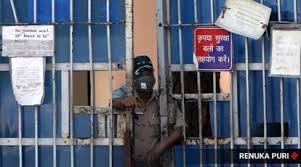By Harihar Swarup
Once again, the life of a prisoner is in the public eye. What they eat, when they get up, how they sleep—these are questions being asked on social media platform, news shows and in private conversations. Curious minds are constantly wondering what special privileges will be made available to Delhi Chief Minister, Arvind Kejriwal, as he gets remanded to judicial custody in the excise policy case.
This is not the moment to ask how certain facilities are being made available to the CM but to question why all prisoners aren’t provided these facilities as a norm. Access to medication for diabetes, a pen, paper, a television, medical staff, books— they are at best classified as “basic”, not “special”. Then there are other prisoners denied such basic amenities when it is long established principle of penology that prisons are places where people are sent “as” punishment and not “for punishment”?
In simple terms, this means that when persons are imprisoned, the curtailment of liberty is the punishment. Nowhere is it prescribed that prisoners should be made to sleep on concrete floors, live in unhygienic conditions or eat food with worms. Yet, that seem to be an expectation. A life of hardship, days of misery, nights of despair — this is how a common person imagines the life of a prisoner to be. Sadly, this narrative is hardly challenged, bringing us to the present situation, where access to most basic amenities appears like a privilege.
Delhi has three prison complexes. Tihar is the largest in the world, comprising nine central prisons; the second is Rohini and third in Mandoli with six central prisons. At the end of 2022, Delhi prisons had a prison population of 18,497 persons with an occupancy of 185 per cent. One concerning fact is the high incarceration rate in Delhi (110 percent) vis-a-vis the national average (52 percent) incarceration rate refers to the number of prisoners per lakh population, and Delhi is fourth in the country.
Central jail no 2 where Kejriwal is lodged, has the lowest prison occupancy 118 per cent among the other prisons, with central Jail no 4 at 466 per cent occupancy (3,453 prisoners in capacity of 740 prisoners) and Central Jail no 1 at 411 per cent occupancy (2,323 prisoners in the capacity 565 prisoners). Acute over crowing can have disastrous implications for a prisoner— imagine the queues for accessing toilets for morning routines. Sleeping on a rotational basis, struggling for space, not to mention the undue stress on prison administration and resources.
Allocation for institutions such as schools or hospitals is based on the number of seats or beds available. Why are there no such standards for prisons? Why it is acceptable to remand a prisoner to a prison with no capacity? Why does the superintendent of prison not have the power to deny admission when their seats (capacity) are full? The Supreme Court has time and again upheld the right to life in the context of prisoners. The right to life includes the right to live with dignity and this should include the right not to be detained in overcrowded prisons. (IPA


